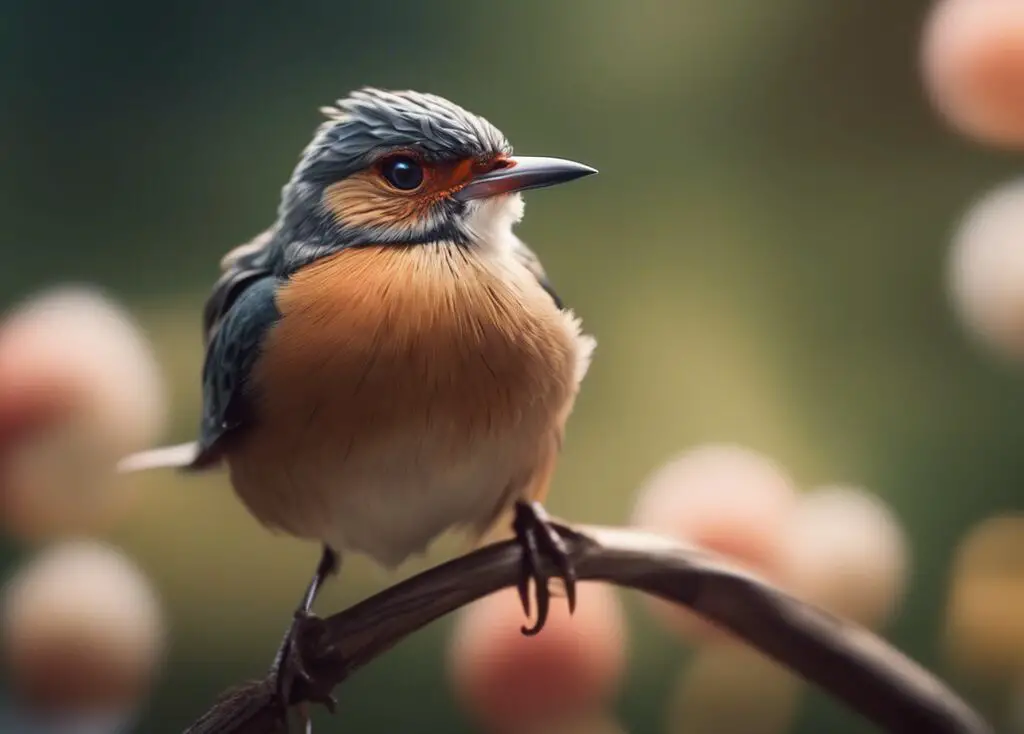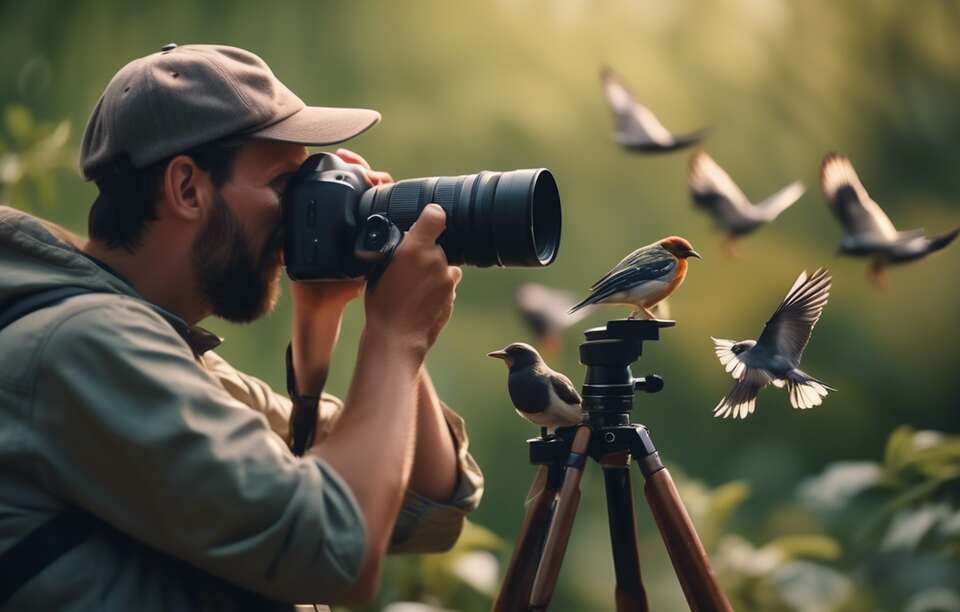Mastering bird photography involves more than just a camera—it’s about understanding behavior, honing skills, and capturing nature’s fleeting moments. Explore essential techniques and expert tips to elevate your bird photography today.
Table of Contents
Mastering Bird Photography: Techniques and Tips
Understanding Bird Behavior
To master bird photography, it is essential to have a good understanding of bird behavior. Different bird species have various habits and patterns, so observing them in their natural habitat is crucial. Pay attention to how they fly, perch, feed, or interact with other birds. Understanding these behaviors will help you anticipate their movements and capture stunning photos.
Choose the Right Equipment
Having the right gear is crucial for successful bird photography. Invest in a quality camera with a telephoto lens to capture birds from a distance without disturbing them. A tripod can also be handy to stabilize your camera and lens, especially when shooting in low light conditions. Additionally, consider carrying extra batteries and memory cards to avoid missing out on any shot.
Patience is Key
Bird photography requires a great deal of patience. Birds can be unpredictable, and getting the perfect shot may take time. Find a comfortable spot, observe the birds in their surroundings, and wait for the right moment to capture their natural behavior. Avoid making sudden movements or loud noises that can startle the birds.
Use the Right Settings
Understanding your camera settings is essential for bird photography. Use a fast shutter speed to freeze the bird’s motion and avoid blurry photos. Adjust the aperture to control the depth of field and focus on the bird while blurring the background. Experiment with different settings to find the right balance for the perfect shot.
Composition and Framing
Pay attention to the composition of your bird photos. Use the rule of thirds to create a visually appealing image, placing the bird off-center for a more dynamic shot. Consider the background and surroundings to avoid distractions that can take away from the bird. Experiment with different angles and perspectives to capture unique and captivating photos.
Lighting and Weather Conditions
Lighting plays a crucial role in bird photography. Aim to shoot during the golden hours of sunrise and sunset when the light is soft and warm, creating a beautiful glow on the birds. Avoid harsh midday sunlight that can create strong shadows and blown-out highlights. Overcast days can provide soft, even lighting that is ideal for capturing details and colors.
Post-Processing and Editing
Post-processing can enhance your bird photos and bring out the best in them. Use editing software to adjust the exposure, contrast, and colors to make your images pop. Crop the photos to improve the composition and remove any unwanted elements. However, remember not to over-edit and maintain the natural look of the birds.
Continuous Learning and Practice
Mastering bird photography is a continuous learning process that requires practice and dedication. Keep exploring new techniques, studying the work of other photographers, and practicing regularly to improve your skills. Experiment with different settings, locations, and bird species to expand your portfolio and capture unique moments in the world of bird photography.
By following these techniques and tips, you can enhance your bird photography skills and capture stunning images of these beautiful creatures in their natural habitats. Remember, patience, practice, and a deep appreciation for birds are key to mastering the art of bird photography.
Choosing the Right Gear for Bird Photography
Photography gear plays a crucial role in capturing stunning bird images. To master bird photography, selecting the right equipment is essential. Here are some tips on choosing the appropriate gear for bird photography:
Understanding Your Camera
Familiarize yourself with your camera settings to maximize its potential for bird photography. Learn how to adjust aperture, shutter speed, ISO, and focus modes to capture sharp and well-exposed bird images. Practice using different settings in various lighting conditions to hone your skills.
Selecting the Right Lens
Investing in a good quality telephoto lens is key for bird photography. A telephoto lens with a focal length of 300mm or more allows you to capture birds from a distance without disturbing them. Consider factors like lens weight, aperture, and image stabilization when choosing a lens for bird photography.
Tripod and Gimbal Head
Using a sturdy tripod is essential for achieving sharp and stable bird images, especially when shooting in low light conditions or using a heavy telephoto lens. Pair your tripod with a gimbal head for smooth panning and tracking of birds in motion. This setup helps reduce camera shake and ensures crisp images.
Teleconverters
Teleconverters are useful accessories that increase the focal length of your lens, allowing you to get closer shots of birds without investing in a super-telephoto lens. When using teleconverters, be mindful of potential image quality loss and reduced aperture size.
Camera Bag and Accessories
A reliable camera bag is essential for carrying your gear safely during bird photography expeditions. Choose a bag that accommodates your camera body, lenses, tripod, and other accessories comfortably. Additionally, consider investing in accessories like extra batteries, memory cards, lens cleaning kit, and a remote shutter release for convenience.
Practice and Patience
Mastering bird photography requires practice and patience. Spend time observing bird behavior, studying their habitats, and practicing different photography techniques. Experiment with composition, lighting, and angles to capture unique and compelling bird images.
Post-Processing Software
Post-processing is a crucial step in enhancing and refining your bird images. Familiarize yourself with editing software like Adobe Lightroom or Photoshop to adjust exposure, contrast, sharpness, and colors. Develop your editing style while maintaining the natural look of the bird photos.
Continuous Learning
Stay updated on the latest photography techniques and equipment trends in bird photography. Join photography forums, attend workshops, and seek advice from experienced bird photographers to expand your knowledge and skills. Embrace a learning mindset to continuously improve your bird photography craft.
By choosing the right gear, practicing diligently, and staying committed to learning, you can master the art of bird photography and capture breathtaking images of these majestic creatures.
Conclusion
To truly master bird photography, one must combine both technical expertise and a deep understanding of avian behavior. By employing the right techniques and tips, such as using the correct camera settings, understanding composition, and practicing patience, photographers can capture stunning images of birds in their natural habitats. Additionally, selecting the appropriate gear, including the right camera body, lenses, and accessories, is crucial for achieving professional-level results in bird photography.
When it comes to mastering bird photography techniques, one of the key aspects to focus on is understanding your subject. By researching the behavior patterns of different bird species, you can anticipate their movements and get into position for the perfect shot. Moreover, learning to read bird body language can help you predict when they are about to take flight or engage in interesting behaviors, allowing you to capture those fleeting moments with precision.
Composition plays a vital role in creating visually appealing bird photographs. Utilize techniques such as the rule of thirds, leading lines, and framing to compose your shots effectively. Experiment with different angles and perspectives to add variety to your portfolio and make your images more engaging. Pay attention to the background and lighting conditions to ensure that your subject stands out and the overall image is well-balanced.
In addition to mastering techniques, having the right gear is essential for successful bird photography. Invest in a camera body that offers fast autofocus capabilities and high-resolution images to capture the intricate details of feathers and plumage. Selecting the appropriate lenses, such as telephoto or zoom lenses, will allow you to photograph birds from a safe distance without disturbing them in their natural environment.
Accessories like tripods, bean bags, and camera straps can enhance your shooting experience and help you achieve sharper images. Consider using camouflage gear to blend in with the surroundings and avoid startling the birds. By being well-prepared with the right equipment, you can focus on honing your skills and capturing breathtaking moments in the world of bird photography.
Mastering bird photography requires a combination of technical expertise, artistic vision, and a profound respect for nature. By implementing the techniques and tips discussed in this article and selecting the appropriate gear for your photography endeavors, you can elevate your skills and create compelling images that showcase the beauty and diversity of avian life.
Keep practicing, exploring new techniques, and immersing yourself in the fascinating world of bird photography to capture moments that evoke wonder and inspire others to appreciate the natural world around them.



